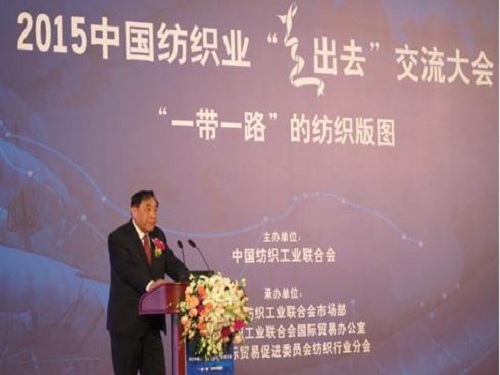
Wang Tiankai, president of the China Textile Industry Federation, said at the "China Textile Industry's Going Out" Exchange Conference in Shanghai on the 14th that facing the complicated situation at home and abroad, the multinational layout of Chinese textile enterprises is accelerating.
Wang Tiankai said that since the reform and opening up, especially since China's accession to the WTO, China's textile industry has seized opportunities and achieved tremendous development achievements. The highly market-oriented textile industry chain has basically been completed and has become the world's largest textile investment, production, consumption and exporter. However, since the financial crisis, the domestic and international challenges faced by the industry have become increasingly severe, and the international competitive advantage and sustainable development potential have faced difficulties.
Wang Tiankai said that according to the Boston Consulting Group’s report, China’s rising labor and energy costs and appreciation of exchange rates during the past decade have significantly weakened the manufacturing industry’s leading edge, including the textile industry. McKinsey & Co.'s recent survey of 40 US and European brand clothing companies shows that Bangladesh, Vietnam, India, Myanmar and Turkey have become the first choices for apparel purchase transfer. For China, these countries' future advantages should not be underestimated.
“In order to meet many domestic and international challenges, create new international competitive advantages and sustainable development capabilities, the cross-country layout of China's textile industry has accelerated in recent years,†Wang Tiankai said: “One main line is led by industrial capital, through cooperation. The multinational layout of productivity creates the manufacturing base layout model of 'China + neighboring countries'; the other main line is industrial capital through overseas direct investment, mergers and acquisitions, high-quality raw material resources, design innovation resources, brand resources and market channel resources on a global scale Extend and control vertically to drive the industry as a whole to infiltrate the high value-added areas of the industrial value chain."
Wang Tiankai believes that 2015 is a very important year for China’s foreign investment in the textile industry. The “Belt and Road†strategy, as a major political and economic decision made by China, is fully compatible with the historical process of partial resettlement of textiles and garments. This will provide enterprises with a good opportunity for better international deployment.
A group of “going global†companies shared their “overseas titles†at the exchange conference, including Shandong Ruyi Technology Group, which has 13 branded apparel manufacturing companies abroad, and established 12 (solely-owned, cooperative) factories abroad. Jiangsu Dongdu Textile Group, as well as Lutai Group, which has established high-standard factories in Vietnam, Cambodia, and Myanmar.
According to incomplete statistics from the Ministry of Commerce of the People's Republic of China, as of the end of 2014, China's textile and apparel companies set up 802 overseas companies, with a total accumulated foreign direct investment of 4.01 billion US dollars. In 2014, the direct foreign investment flow was 810 million U.S. dollars, operating income was 7.05 billion U.S. dollars, and 92,000 employees were employed at the end of the year, of whom 7,000 were Chinese personnel.
Bosgoo(China)Tecgnology Co., Ltd121 , http://www.bosgootest.com
